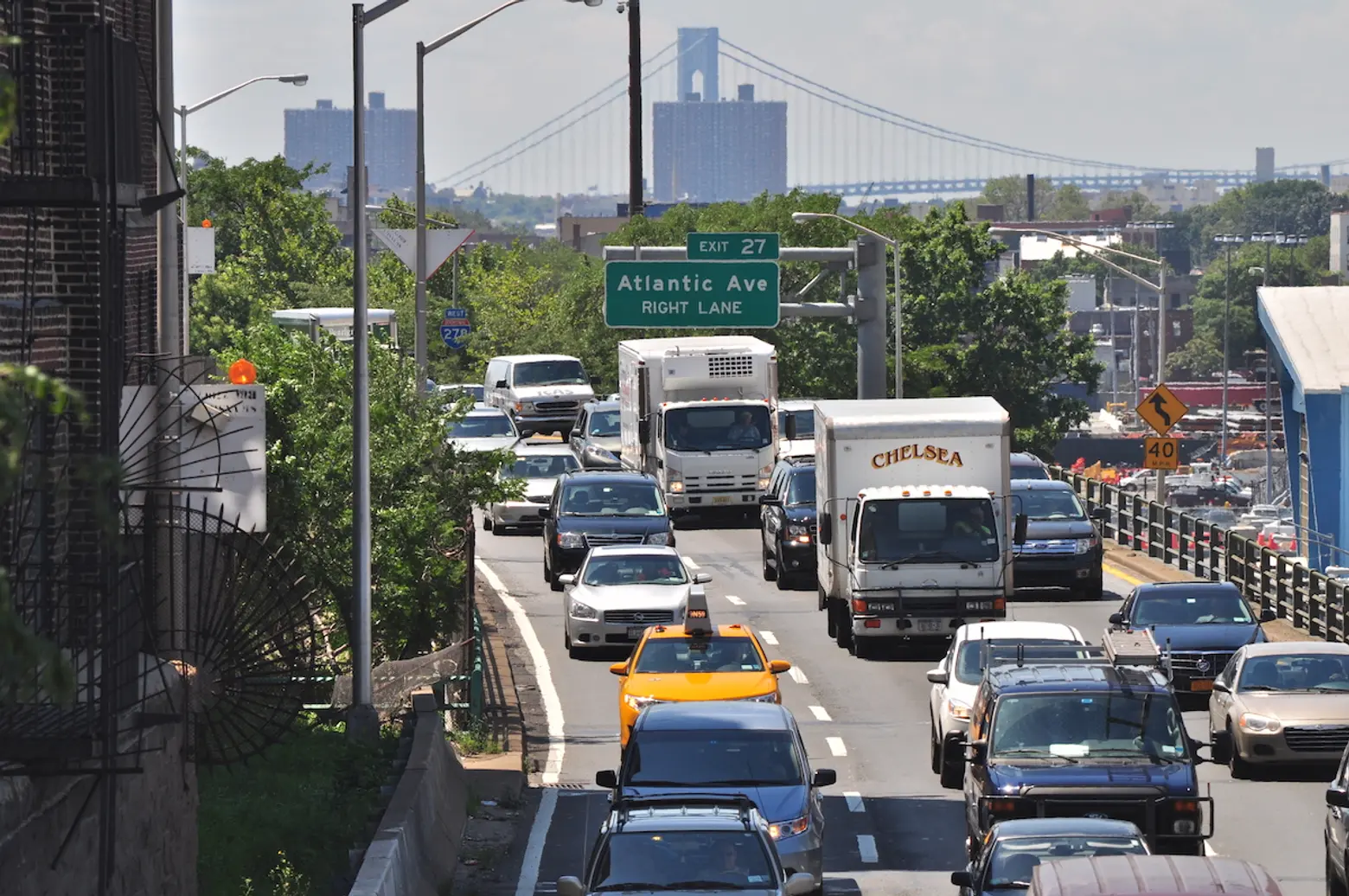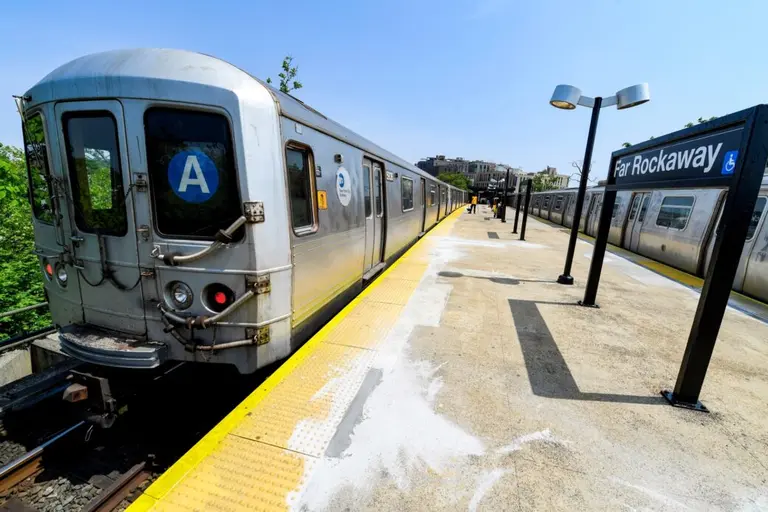BQE panel releases anticipated report, says the highway will be unsafe for drivers in five years

The Brooklyn Queens Expressway (BQE) from the south end of the Brooklyn Promenade. Photo by Joe Mabel via Wikimedia
The Brooklyn Queens Expressway (BQE) from the south end of the Brooklyn Promenade. Photo by Joe Mabel via Wikimedia
The 16-person panel that convened last April to assess reconstruction options for the Brooklyn-Queens Expressway’s 1.5-mile triple cantilever stretch has released its report. Their recommendations call for repair work to begin immediately and outline “aggressive traffic reduction strategies” like eliminating one lane in each direction (six lanes would become four) and imposing weight limits on vehicles. The panel also rejected the controversial proposal to build a temporary highway at the Brooklyn Heights Promenade during the reconstruction and said the Promenade should remain open.
The rehabilitation project was announced in 2018. The city’s transportation department unveiled two plans for revamping the Brooklyn Heights and DUMBO section of the BQE, both of which were problematic: the “fast” option involved a six-year plan to divert cars to an elevated highway next to the Promenade and the second suggested replacing the BQE, lane by lane, at night, inducing a traffic nightmare that would last up to eight years.
Mayor Bill de Blasio put together a panel of diverse experts to assess the various proposals. Their review discovered that the portion of the BQE in question is in even worse shape than previously realized.
“The frightening truth is the triple cantilever section of the BQE is in dire condition and sections may become unsafe within the next five years. That’s why this panel is calling for an immediate fix of this section of the roadway,” said Carlo A. Scissura, the panel’s chair and president and CEO of the New York Building Congress, in a statement. “In addition to this repair work, we need to explore every strategy to lower the number of vehicles on the road – of which there are far too many – to help extend the highway’s life, reduce crashes and begin transitioning commuters to other routes and modes of transit.”
The panel called proposals to turn the promenade into a temporary highway “flawed,” citing incorrect capacity assumptions based on current traffic volume, their “unacceptable” encroachment onto adjacent public spaces, and an investment that would be “not realistic or equitable.”
Nevertheless, “a truly transformative plan is urgently needed, one that does not focus solely on 1.5 miles of a 20-mile corridor but reimagines the entire road from Staten Island to Brooklyn to Queens,” Scissura continued. “This panel calls on our city, state and federal governments to work together and begin this critical process immediately.”
De Blasio signed an executive order to hit heavy trucks on the BQE with a $7,000 fine, the mayor announced on WNYC Friday, as the New York Post reported. “There are a number of trucks that are on the BQE that are causing serious problems with the weight that in many cases are trying to mask themselves as lighter trucks,” de Blasio said. The order will begin cracking down on the highway’s 40-ton weight limit on Monday.
At the same time, de Blasio disagreed with the panel’s recommendation to reduce lanes on the highway. “The problem I have with that is one, it’s not a guarantee that people get out of cars. It is a guarantee of traffic jams and other problems,” the mayor said.
That view is being challenged by transportation experts who argue that expanding roadways ultimately worsens traffic by attracting more cars. “We’ve gone through a 70-year period of adding and widening but this is a failing strategy,” said panelist Samuel I. Schwartz to the New York Times. “It’s like solving the obesity problem by loosening your belt.”
The panel’s report outlines a series of additional actions that could mitigate the impact of traffic, including congestion pricing and split tolling on the Verrazano Bridge, closing or restricting ramps and connections to and from the BQE, allowing small trucks on the Belt Parkway, diverting traffic to the Williamsburg Bridge, adding more and longer G trains, and adding express service on the D, R, and F lines.
Their findings have been met with support from activists and organizations. In a statement, the Brooklyn Heights Association said: “We are very encouraged that the panel has embraced many of the ideas the BHA and the Coalition for the BQE Transformation have been calling for—a comprehensive plan for the entire BQE corridor, traffic demand management strategies including lane reductions, and critically, the coming together of our local, state, and federal officials to make this transformative vision a reality.”
Gov. Andrew Cuomo has remained quiet on the issue.
RELATED:




























